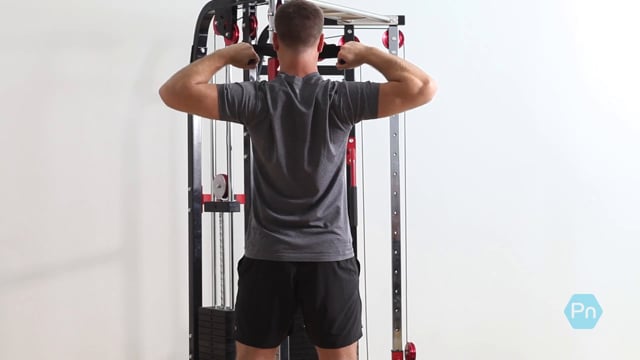Face Pull Exercises: Strengthen Your Upper Body and Improve Posture
“Ready for a game-changer? Meet face pulls. They're not just an exercise. They're your ticket to better fitness, stronger posture. No more slouching. No more weak upper body. It's time to pull your way to power. Let's redefine what strength looks like. Ready to transform? Dive in!”
Benefits of Face Pulls
Face pull exercises are a hidden gem in the world of fitness, providing a plethora of benefits that can elevate your training to new heights. These targeted movements not only work your deltoids but also engage the rear deltoids, rhomboids, trapezius, and rotator cuff muscles. This comprehensive muscle engagement leads to a stronger and more muscular appearance in your upper body. Not to mention, face pulls also contribute to better shoulder health, stability, and posture improvement.
Muscles Targeted
When you perform face pulls, you're not just pulling a weight or resistance towards your face. This exercise targets a whole host of muscles, including the posterior deltoid, rhomboids, trapezius, and rotator cuff. By working these muscle groups, you can achieve a greater range of motion and stronger shoulder stability, making it an excellent addition to any upper body workout routine.
Equipment Needed
Face pulls can be performed using various equipment, providing flexibility and accessibility for all fitness levels. You can use resistance bands, a cable machine with a rope attachment, or even a dumbbell. The key is to choose the equipment that suits your fitness level and goals best.
Proper Form and Technique
To maximize the benefits and prevent injuries, it's crucial to perform face pulls with the right form and technique.
- Begin by standing with your feet shoulder-width apart and grabbing the handles or attachment with an overhand grip.
- Pull the resistance towards your face, focusing on squeezing your shoulder blades together and keeping your elbows flared outwards.
- Maintain a controlled movement throughout the exercise and avoid jerking or using momentum to complete the motion.
Variations of Face Pulls
There are several variations of face pulls that can cater to different fitness levels and training preferences. For beginners or those with limited strength, seated face pulls are considered a good starting point. On the other hand, advanced exercisers might benefit from heavy-duty face pulls, where they hang weight plates over a high point, mimicking a pull-up bar movement.
Common Mistakes to Avoid
While face pulls can be incredibly effective, doing them incorrectly can lead to injuries and negate the benefits. One common mistake is pulling the weight too close to your face, which can strain your neck and shoulders. Another mistake is using excessive resistance or weight, compromising your form and risking injury. Always prioritize proper form over heavy weights.
Safety Precautions
Safety should always be a top priority when performing any exercise, and face pulls are no exception. While face pulls are generally safe and beneficial, they might not be suitable for everyone, especially those with pre-existing shoulder issues. If you experience pain or discomfort during face pulls, it's essential to consult a professional medical expert or fitness coach.
Face Pulls vs. Other Exercises
Face pulls stand out among other shoulder exercises due to their ability to target multiple muscles and promote better shoulder health and stability. While other exercises like delt flys work similar muscle groups, face pulls offer a more comprehensive engagement and can be more suitable for individuals with posture or shoulder stability issues.
Incorporating Face Pulls into Workouts
Face pulls can complement your existing workout routine and provide a new dimension of training for your upper body. They can be performed as part of a shoulder or back-focused workout, or even integrated into a full-body routine. Mixing face pulls with other exercises can lead to a more balanced and effective workout.
Tips for Effective Face Pulls
To get the most out of your face pull exercises, consider the following tips:
- Focus on the mind-muscle connection to engage the targeted muscles effectively.
- Start with lighter resistance or weight and gradually increase as you improve your form and strength.
- Perform face pulls with slow and controlled movements to avoid injury and maximize muscle engagement.
- Incorporate face pulls as part of a well-rounded upper body workout routine.
- Listen to your body and stop if you experience pain or discomfort.
Stay tuned for more insights on face pull exercises and how they can benefit people of different fitness levels, including athletes and those in need of rehabilitation or injury prevention. Remember, always seek professional advice before beginning any new exercise program.

